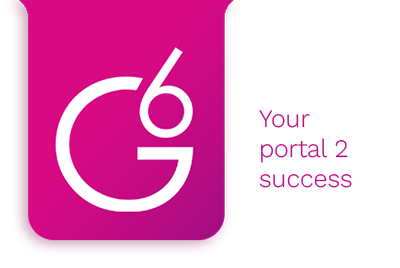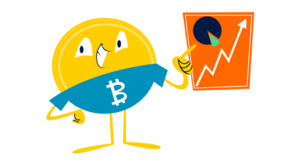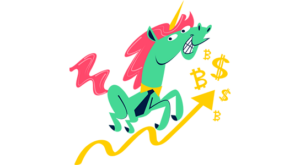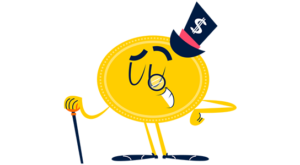Is your team struggling to predict revenue and budget properly?
If so, you’re in the right place! Several small businesses want to predict future earnings but don’t understand sales forecasting!
Hi, my name is AJ! I recently sold my company for multiple seven figures. Now, I help other entrepreneurs achieve their dreams!
When I initially opened my business, I faced several challenges, sales forecasting being a major one!
But once I nailed forecasting, everything else clicked! Keep reading to learn how you can do the same.
Key Takeaways
Sales forecasting predicts how much a business will earn in a month, quarter, or year.
With proper forecasting, companies can increase revenue, boost team morale, and set better goals.
There are various forecasting methods, including historical, multivariable, and the length of the sales cycle.
Related Reading: Best Small Business CRM
SBB Featured Partners
Sales forecasting is when a company creates in-depth reports that predict how much a sales agent, team, or business sells.
Teams can use a sales forecast to predict sales in any of the following time ranges:
Weekly Monthly Quarterly
Usually, accurate sales forecasts utilize past performance data to predict future earnings.
Why is sales forecasting important? Sales managers should implement forecasting for the following reasons:
It’s a critical aspect of meeting sales quotas They allow you to identify issues/problems before they impact your sales funnelIt ensures you know how well your sales team is performing
A customer relationship management (CRM) system is essential for sales forecasting.
It provides a centralized platform to store and analyze historical sales data, track lead progression, and gain insights into future sales trends.
Next, I’ll dive into the many advantages of using sales forecasting methods!
There are numerous benefits of sales forecasting.
Predicting future sales not only brings in more revenue but it also boosts your sales teams’ morale!
Let’s look at the seven advantages of an accurate sales forecast method!
Sales forecasting plays a pivotal role in revenue predictions.
A systematic and accurate forecast provides insights into potential sales, clearly showing how much your team can expect in revenue.
Predicting revenue is particularly beneficial for budgeting and financial planning.
For instance, by analyzing past sales data and assessing current market trends, sales forecasts help businesses anticipate their financial future.
As a result, this allows them to strategize and allocate resources effectively.
Sales forecasts are a great way to set achievable goals for your sales team.
Using past performance data, sales managers can define benchmarks and quotas their agents should aim for.
Defining quotas creates a sense of accountability among team members and motivates them to achieve those goals.
Lastly, by setting realistic goals, leaders ensure a manageable workload for all team members!
Another advantage of sales forecasting is that it leads to more accurate budgeting.
Why is an accurate budget important?
Think about it; your team shouldn’t overextend itself, especially financially.
Also, accurate budgets provide a clearer picture of various operations, including:
The number of sales The net profit of each sale Revenue Manufacturing costsEmployee wages
Creating an accurate budget ensures your company spends its money wisely!
A sales forecast is instrumental in improving prospecting.
Prospecting is identifying potential customers or clients, termed ‘prospects.’
Therefore, by accurately predicting the sales trends and understanding the historical sales data, sales teams can target the right customers at the right time.
Further, prospecting helps identify the customer segments more likely to generate higher sales.
As a result, businesses can focus their efforts on high-value prospects, boosting sales efficiency!
One of the most critical components of sales forecasting is understanding your workforce needs.
For instance, if you predict higher sales volumes in a specific time frame, you’ll need more sales agents to manage those leads effectively.
Therefore, accurate sales forecasts help identify periods when you will likely need additional employees or temporary staff.
The importance of sales forecasting software can’t be overstated in boosting morale!
When team members clearly understand their goals and the potential revenue they can generate, it boosts their confidence and motivates them to work harder.
Further, sales forecasting gives your team concrete evidence for why they must continue trying to hit or exceed targets.
As a result, this creates a positive work environment, increasing the likelihood of successful sales!
Lastly, accurate sales forecasting means less stress on you as a business owner (and who doesn’t want that)!
When you use historical data to predict future sales performance, you aren’t left wondering how much revenue you can expect.
As a result, you can feel more confident in your budget, sales team, and overall sales targets!
How do companies predict future revenues?
There are three groups of people responsible for sales forecasting, including:
Product leaders Sales leaders Sales reps
Utilizing knowledge from multiple groups ensures your company has accurate sales forecasts to rely on!
Product leaders play a crucial role in sales forecasting.
For instance, they understand the following things:
The productThe development stagesMarket positioning Potential consumer responses
With this knowledge, product leaders can contribute significantly to predicting future sales.
Product leaders often work closely with the sales and marketing teams, providing valuable insights into product features and updates that might impact sales.
Also, product leaders monitor market trends and competitor activities, which can influence sales projections.
As you can see, their role is integral to the accurate and comprehensive sales forecasting process.
Sales leaders organize and manage the sales team.
Also, they are responsible for the following business operations:
Developing a sales strategySetting targetsTracking performance against sales goals
Therefore, a sales leader’s role is vital in accurate sales forecasting!
For instance, a sales leader understands team dynamics, individual strengths and weaknesses, customer preferences, and market trends.
This valuable information helps these individuals collaborate with product leaders to determine potential revenue generation and create realistic targets for their teams.
Lastly, there are sales agents.
Sales reps contribute to sales forecasting in several ways.
First, they interact with customers daily; this gives them firsthand insights into customer needs and preferences.
Secondly, a sales rep’s knowledge of market trends and product updates helps refine sales forecasts further.
Accurate sales forecasting increases job satisfaction by ensuring attainable targets, leading to a more motivated and successful sales team!
Multiple stakeholders within an organization utilize sales forecasts for various purposes.
Primarily, the sales team uses a sales forecast to do the following things:
Set goalsStrategize for the future Assess individual and team performance
Further, the marketing department uses accurate sales forecasts to align its campaigns with expected sales trends and target high-value customer segments.
Another branch that uses sales forecasting is the finance department.
For instance, the finance team relies on sales forecasts for budgeting and financial planning.
Similarly, the production department uses these forecasts to plan inventory and production schedules.
The HR department may also utilize sales forecasts to plan workforce requirements during peak sales periods.
Lastly, company executives, investors, and business leaders use these forecasts to make informed decisions about the company’s direction and growth opportunities.
As you can see, sales forecasting is a vital tool for every department within a business!
Is it possible to forecast sales accurately? And if so, how accurate are these predictions?
The accuracy of a sales forecast varies depending on several factors, including:
CompanyManagementIndustryPast performanceTools available
Still, most sales forecasting accuracy is under 90%. Why?
There are numerous reasons for inaccurate sales forecasting, including:
Bias impacts the predictions The sales teams’ predictions or numbers are inaccurate They rely too heavily on sales managers’ interpretations of sales pipeline deals They don’t take into account industry or market trends
When companies implement their first sales forecast, it’s almost always inaccurate (and that’s okay; it’s a starting point).
Regardless of inaccuracies, teams must utilize the data and make necessary adjustments.
An excellent way to gauge how good your forecasting predictions are is to check if they’re within 10% of the actual statistics.
You’re doing well if you regularly fall within 10% of your initial sales forecast!
Creating an accurate sales forecast is undoubtedly beneficial.
However, forecasting includes several challenges you must know.
Let’s look at the most challenging aspects of sales forecasting.
Creating an accurate sales forecast is one of the biggest challenges with forecasting.
Even when companies can access in-depth historical sales data and advanced tools, predicting the future is never certain.
It takes considerable time and effort to create an accurate sales forecast!
Another challenge is that employees don’t trust the sales forecasting tools your company implements.
Forecasting sales is only possible if your entire team is on board.
Human subjectivity is one of the biggest reasons that sales forecasts are inaccurate.
Your team may unconsciously overestimate or underestimate sales, which impacts overall accuracy.
Some sales forecasting tools have a steep learning curve.
For instance, these tools require expertise, which may be costly for small businesses.
Also, many companies need an employee or team dedicated solely to regularly creating sales forecasts.
Lastly, sales forecasting can take up a lot of time and resources.
Inefficiencies are especially prevalent if you’re using manual methods to create forecasts.
Not only does inefficiency reduce productivity, but it also causes unnecessary stress on your employees.
Did you know there are various methods for sales forecasting?
These methods include the following:
Opportunity stage Length of sales cycle Intuitive Historical Multivariable Pipeline
Here’s what you must know about each of these methods!
This sales forecast strategy accounts for the sales process stages and where each deal is.
The deals that are further along in the pipeline, the likelier they are to close.
After choosing a reporting period (month, quarter, etc.), multiply each deal’s potential value by its probability of closing!
The benefits of this sales forecasting method include:
It’s easy to create a sales forecast The calculations are objective
Regarding the downsides, you must consider the following things:
Inaccurate sales data leads to inaccurate forecasts The calculations don’t consider the age or size of each deal
Let’s say your team creates the following percentages based on your pipeline and how likely deals are to close:
Initial call: 5%Qualified: 15%Product demo: 25%Product Trial: 55%Final call: 88%
According to this model, a $2,000 deal at the ‘Product trial’ stage is 55% likely to close.
Therefore, the forecasted value of this deal would be $1,100.
This method predicts future sales using the age of each opportunity to estimate when they’re most likely to close.
This strategy relies on objective data.
Therefore, companies are less likely to get an overly generous forecast.
The pros of this sales forecasting process include:
The calculations are objectiveIt’s easy to integrate lead sources for more accurate forecasts
On the other hand, the cons of this method include:
The calculations don’t always take the size or the type of each deal into consideration The technique only works if teams carefully track the data
Pretend your company’s sales cycle lasts an average of eight months.
If a sales agent has worked on an account for four months, the forecast may predict they’re 50% likely to win the deal!
Intuitive forecasting is an excellent method if you have seasoned sales agents.
In this method, managers ask their agents to estimate the likelihood of closing each deal they’re working on.
The advantages of this method include:
It relies on your sales team, who work with your prospects the most (and know them better than anyone) You don’t need to use or track historical data
Still, there are some downsides to know, which include:
Calculations are subjective Each sales rep can forecast sales differently It’s impossible to scale or replicate this method
Pretend you want to forecast sales for a business without data because it’s your first time doing business with them.
After assigning a sales rep to the account, they forecast $33,000 in sales within a year.
The historical sales forecast methodology is simple.
With this strategy, you observe how much you sold last quarter and assume the result will be the same or greater in the current period!
The benefits of this method include:
It relies on historical data (which can be helpful in steady markets) It’s simpleIt’s easy to implement
The downsides of this strategy include:
It doesn’t consider seasonalityIt doesn’t consider market changes It doesn’t consider account buyer demand
Let’s say your company sold $50,000 worth of products last April.
Therefore, using the historical forecasting method, you’d predict your future sales will hit $50,000 (or somewhere close).
Using the multivariable method to forecast sales is more sophisticated than other methods.
For instance, this strategy uses predictive analytics and other factors like:
Average sales cycle length Probability Individual sales rep performance
The pros associated with using this method include:
It relies heavily on present and historical data It is one of the most accurate ways to predict future sales
The cons of this method include:
It requires an analytics solution or a forecasting tool, which can be expensive Sales reps have to track and clean sales data consistently
Consider a company that uses multivariable analysis forecasting.
Alongside observing the current quarter, they also consider the average length of the sales cycle, the probability of deal closure, and the performance of individual sales representatives.
For instance, if a representative usually closes deals within two months and has a closure rate of 60%, they take these factors into account.
If a $10,000 deal is currently in its second month, the forecasted value of this deal would be $6,000.
Lastly, there’s the pipeline forecasting method.
With this method, companies review each deal in the pipeline and calculate the odds of closing it based on unique company variables.
The advantages of the pipeline method include:
It relies on sales data, making it more accurate It considers the unique factors of each opportunity
However, the disadvantages to think about include:
Predictions can be easily skewed because they rely on data so much It (typically) demands a sales forecasting tool
Say your team usually closes deals between $1,000 and $5,000 within 90 days.
All your current deals in the pipeline have a high likelihood of closing.
As a result, you can use the data to determine your monthly and quarterly forecast.
Now I’ll show you how to forecast future sales!
First, establish a documented, structured sales process that your team can use when converting a prospect to a lead to a customer.
That way, your team can use the same stages and strategies consistently.
Determine goals to gauge monthly or quarterly performance.
When creating goals, ensure they are:
Defined by time constraintsAchievable MeasurableSpecificRelevant
Pick one of the sales forecasting techniques I mentioned above.
If you’re unsure which is best for you, research what other companies in your industry use.
Next, implement the forecasting method you selected.
Remember that it may take a little bit of time for your employees to adjust to the new system, so it won’t be very accurate immediately.
Lastly, never stop improving your sales forecasting strategy!
The more you pay attention to details and your sales process, the more accurate your predictions will be!
Here are four sales forecasting tips before implementing a prediction strategy!
You can learn a lot about predicting future sales by analyzing the past.
How much did your company sell last year? Are the conditions the same?
Keep an eye on the market.
Is it a buyer’s or seller’s market? What changes are happening in the industry?
Take advantage of your competition and learn how they attract more sales and adapt to industry changes.
Perfecting the sales forecasting process won’t happen overnight.
But if you stick with it, the results will pay off!
Lastly, I’ll address the factors that can impact sales forecasting.
Here are three internal factors that impact sales forecasting!
When sales agents leave your team, revenue decreases.
So, if a large number of salespeople join your team simultaneously, your sales forecast might predict a huge jump in sales!
If you enforce a new policy that affects your sales cycle, then forecasting can become much more challenging.
Some policies might prolong the sales process or make it easier to close deals.
The drive and overall morale of sales teams impact the sales process.
Companies can predict higher sales numbers when team morale is high.
Now, let’s look at some external factors that impact sales forecasts.
Whatever your competitors do will affect win rates.
For instance, if a company closes, your team will experience an increase in demand!
Economic conditions affect sales as well.
For instance, if the economy is struggling, businesses will spend less.
Keep track of market shifts to stay on top of trends.
Buyers change constantly, and it’s critical to stay current on what’s happening.
Lastly, industry changes, such as emerging technology and regulations, can impact sales forecasting!
Therefore, keeping up with everything that’s occurring within your company’s industry is a must!
Demand and revenue can increase if you introduce a new product or feature.
These changes impact your sales agents and the sales process!
Many companies experience fluctuations in sales due to seasonality.
For instance, retail businesses may have a higher demand during the holiday season.
Being aware of these trends can help you make more accurate predictions.
There’s everything you need to know about sales forecasting!
With the right method in place, your team can enjoy better revenue predictions and higher morale.
Let us know how your business predicts future sales in the comments section below!
The post Sales Forecasting: Small Business Guide appeared first on Small Business Bonfire.
—
Blog powered by G6
Disclaimer! A guest author has made this post. G6 has not checked the post. its content and attachments and under no circumstances will G6 be held responsible or liable in any way for any claims, damages, losses, expenses, costs or liabilities whatsoever (including, without limitation, any direct or indirect damages for loss of profits, business interruption or loss of information) resulting or arising directly or indirectly from your use of or inability to use this website or any websites linked to it, or from your reliance on the information and material on this website, even if the G6 has been advised of the possibility of such damages in advance.
For any inquiries, please contact [email protected]




